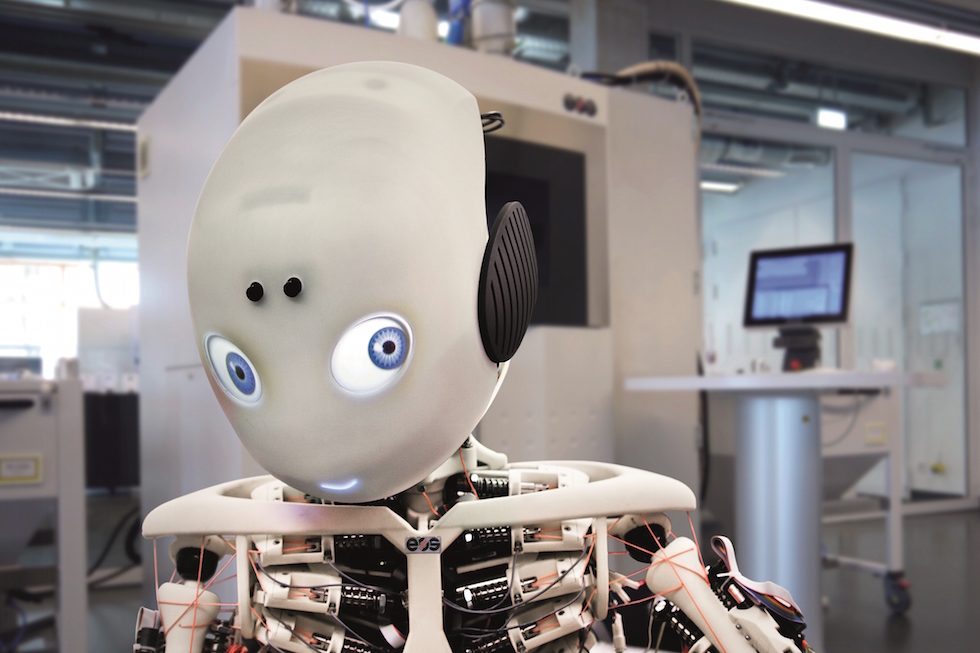
The project, a European collaboration led by the Swiss Devanthro Society and the Technical University of Munich, has previously built a four-foot tall humanoid robot – Roboy Junior - in just nine months, complete with a set of artificial muscles and tendons designed to replicate human movement.
The Roboy robot was built with EOS’ 3D printing technology, and the project’s researchers are continuing to develop its muscles, joints and electronics, in a bid to improve the models until their dexterity, robustness and flexibility are comparable to that of humans.
The complete skeletal body structure of Roboy, which encases its bones and muscles, was built using EOS’ plastic additive manufacturing systems.
Using 3D printing technologies allows lightweight but complex structures to be produced, meaning functionality can be built into a component as it is being manufactured, reducing assembly steps, said Garth Stevenson, area sales manager for UK and Ireland at EOS.
“Industrial 3D printing allows for the efficient, cost-effective production of highly complex, light and stable structures through an iterative process,” he said.
“It therefore provides a high degree of design flexibility, optimisation and integration of functional features and enables the fast modularisation of the robot’s construction.”
Roboy’s hands and forearms were built in one piece, for example, including several joints and individual finger bones.
The technology also allows researchers to rapidly produce and test components within the complex environment of the robot itself.
Building robots with a similar musculoskeletal system to humans should mean they fit more naturally into our environment, said Stevenson.
“With the increasing advances in Artificial Intelligence and robotics, robots will play a much more prominent role both in society and at work,” he said. “In this context, building robots with similar morphology to the human body yields critical advantages over legacy robotic approaches.”
The project’s researchers also believe people will find it easier to interact with human-like robots.
Roboy uses touch sensors to detect people, and is capable of showing emotion.
The researchers used an open-source design, meaning anyone with a 3D printer could develop their own version of the robot.





Red Bull makes hydrogen fuel cell play with AVL
Formula 1 is an anachronistic anomaly where its only cutting edge is in engine development. The rules prohibit any real innovation and there would be...